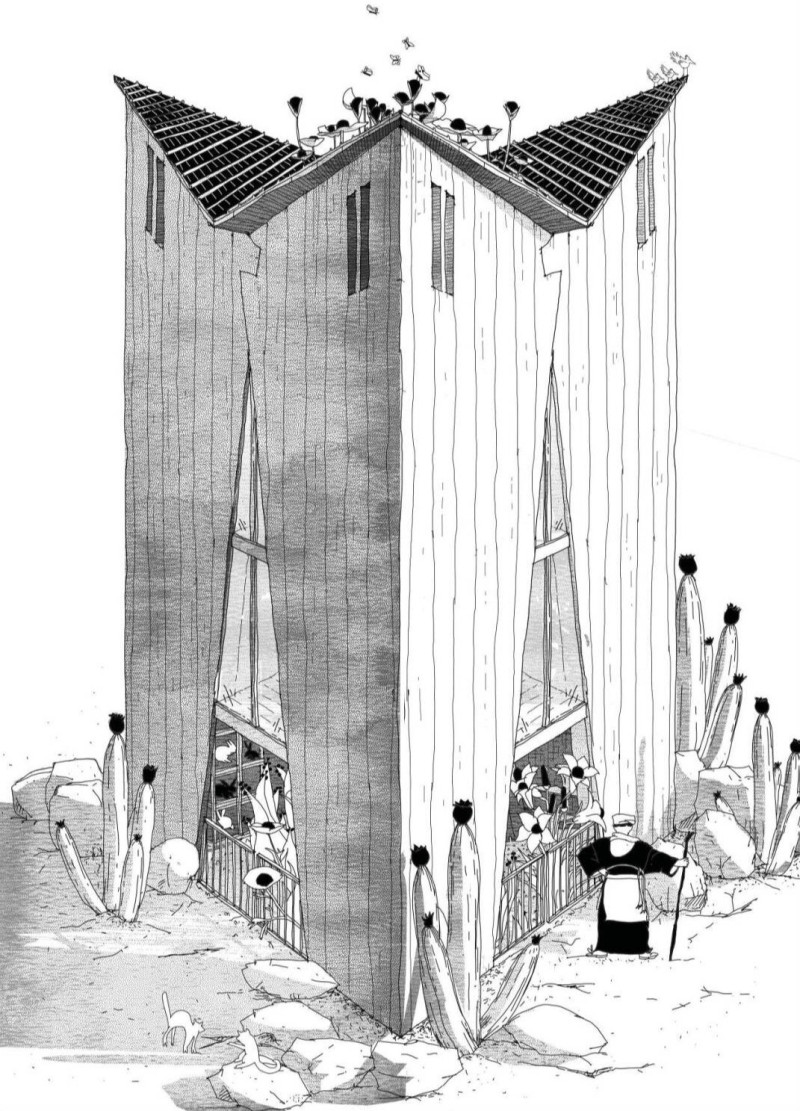5 key facts about this project
The design primarily features a façade composed of vertical wood panels and expansive glass windows. This combination fosters an inviting atmosphere while facilitating optimal natural light and ventilation. The choice of wood not only supports sustainability through its renewable properties but also offers a warm, natural aesthetic that connects the building to its environment. The extensive use of glazing serves to create a visual narrative between the indoors and outdoors, allowing residents to experience the beauty of the surrounding landscape.
At its core, this project functions as a versatile living space adaptable to various climates. The architectural design thoughtfully incorporates passive cooling strategies, providing relief from heat and enhancing occupant comfort. The structure's triangular configuration establishes a modular layout that supports multifunctional spaces, ensuring that different areas of the home can evolve according to the occupants' needs over time. This flexibility is reflected throughout, as spaces are arranged to enable both privacy and social interaction, catering to a modern lifestyle.
Key components of the project include advanced ecological systems designed to minimize the dwelling's carbon footprint. Features such as rainwater collection and greywater recycling systems demonstrate a commitment to responsible resource management. By employing these sustainable practices, the project significantly reduces reliance on municipal water supplies while promoting conservation efforts. Additionally, high-quality insulation materials are integrated throughout the building, ensuring energy efficiency and increased durability irrespective of environmental conditions.
Unique design approaches are evident in the project, particularly in its relationship with climate and natural resources. The integration of adaptable environmental systems addresses regional climatic challenges, allowing the architecture to respond dynamically to both warm and cooler weather. This approach extends beyond mere functionality; it reflects a philosophy that views architecture as a living entity capable of evolving based on its context and the well-being of its inhabitants.
The careful attention to detail can be observed in various design elements, from the curated selection of materials to the thoughtful spatial arrangements. Each component serves a specific purpose, contributing to the overall sustainability and functionality of the dwelling. The architectural plans reveal an intricate balance of form and function, showcasing how each space is crafted to support daily living while fostering a connection to nature.
For readers interested in delving further into the nuances of this project, exploring the architectural designs, sections, and plans will offer valuable insights into the innovative approaches employed in this work. The commitment to sustainable architecture, embedded within a robust design ethos, highlights the essential role that thoughtful architecture plays in shaping our environments and our interactions within them. This project exemplifies how design can thoughtfully merge functionality with ecological responsibility, inviting further exploration into its unique solutions.























